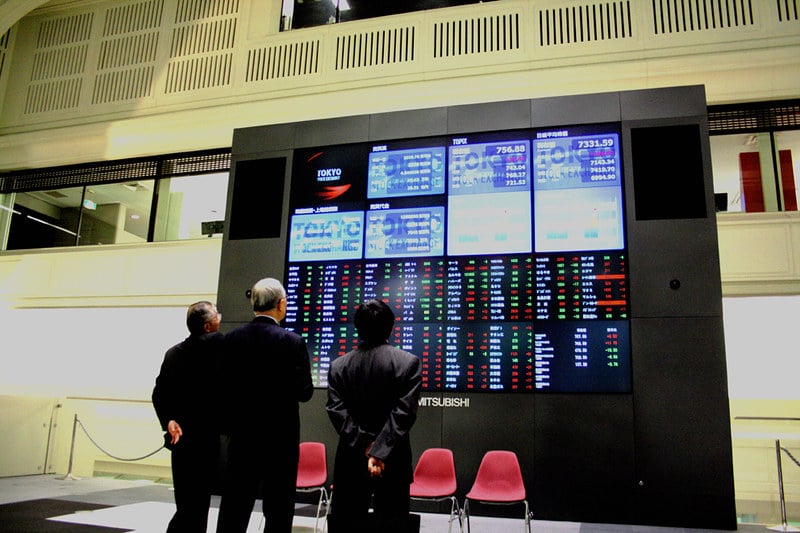USD$3.5 trillion: according to the Intergovernmental Panel on Climate Change (IPCC), this is how much we need to invest every year globally to limit temperature increase to 1.5 degrees Celsius above pre-industrial levels by 2100. This is a substantial sum which we are still a long way from achieving. Hong Kong, as a major financial centre, can play an important role in mobilising the necessary financial resources. In addition to the already announced “Green Bonds” initiatives by the Hong Kong government, the establishment of a specific Green Investment Bank could further help to provide the necessary funds. International examples in the UK, Australia and Japan, among others, show its effectiveness – the time has come for a Green Investment Bank in Hong Kong.
—
Cities will shape the future emission paths and are key to achieving climate goals. Further rapid urbanisation is leading to strong growth in cities. More than half of the world’s population lives in urban areas and 2.5 billion new city dwellers are expected by 2050. Cities occupy only 2% of the world’s land mass, but contribute more than 80% to the global GDP and are responsible for more than 70% of all globally caused energy-related CO2 emissions.
These statistics lead to a great need for low-carbon infrastructure investment. It is estimated that 70% of this infrastructure will be in urban areas- worth trillions of dollars of investment. This is where a Green Investment Bank for Hong Kong can be of great value. The Financial Services Business Council (FSBC) of the European Chamber of Commerce in Hong Kong already advocated for a Green Investment Bank in 2017 and the business case for it is even more convincing today.
You might also like: How Can the UK Reach Carbon Neutrality?
What is a Green Investment Bank?
A Green Investment Bank (GIB) is a type of public financial institution initially funded by government money but in partnership with private investors. It is established with a specific mandate to channel and accelerate financing for renewable energy, energy efficiency and other green sectors, such as water and waste management or sustainable transport. In doing so, the Green Investment Bank can maximise the efficient use of public resources and encourage much needed private sector participation in financing the different green sectors.
In this context, green investment banks take on central tasks:
- Firstly, the GIB can de-risk projects via guarantees and other instruments or provide direct investment capital to projects aligned with its mandate. Green Investment Banks often co-finance early-stage projects, which generates the necessary experience to crowd-in private investors.
- Secondly, with the process of de-risking and co-financing, a GIB can build up and provide crucial knowledge such as tools or standards to the market by applying specialised risk assessments and thorough due diligence processes.
- Thirdly, in providing these assessments, the market attributes a signalling role to the Green Investment Bank’s actions. In some cases, this may mean that if the Green Investment Bank endorses a project from a technical point of view – even without being involved as an investor – private actors will invest.
Why Is Hong Kong the Perfect Place to Set Up a Green Investment Bank?
1. Economic Benefits to Hong Kong
Hong Kong is a centre of finance, insurance, legal and business services for companies operating throughout Asian markets and the world. With the Paris Climate Agreement – and individual carbon neutrality targets – the global community has committed to moving towards a sustainable future. For Hong Kong’s financial services providers, this means meeting (and leading) market demand on our shared path to carbon neutrality. Scaling up investment in low-carbon infrastructure is a core part of green finance, which offers a valuable opportunity to leverage on Hong Kong’s particular strengths.
Hong Kong’s Green Investment Bank’s involvement of the private sector in low carbon infrastructure would create a powerful “demonstration effect” – showing the market that these projects are viable. This would help to grow the pool of capital available to green businesses, increasing the number of projects that can be financed.
Let’s take the example of Building-integrated photovoltaics (BIPV). According to researchers at the Hong Kong Polytechnic University, the BIPV potential in Hong Kong amounts to 11 643 GWh which is equivalent to about 25% of the city’s annual electricity consumption. In other words, Hong Kong could replace approximately half the coal power currently used with locally produced renewable energy. BIPV systems have the potential to become a mainstream option within renewable energy technologies and have, according to several scholars and use cases, proven to be a viable and economically competitive technology for generating renewable energy. However, we still see very few buildings with BIPV in façades and/or roofs in Hong Kong. This is partly due to the limited track record of BIPV in Hong Kong and the resulting low experience of project developers.
The Hong Kong Green Investment Bank can help to quickly tap the potential of BIPV in Hong Kong. By co-financing BIPV projects, which will generate the necessary experience, the Green Investment Bank would be able to crowd-in private investors. By carrying out many such BIPV projects, the GIB would also acquire the necessary knowledge, could prepare specific risk assessments and conduct thorough due diligence accordingly. For private sector investments, such established due diligence processes are crucial in order to become active investors themselves. An additional benefit from getting private investment on board is that the government can be more effective in their own measures as taxpayer money goes a longer way than if the government has to fund everything on its own.
2. Social and Environmental Impact on Hong Kong
Projects funded in Hong Kong via the Green Investment Bank could have a direct impact on Hong Kong’s environment. Projects which improve the energy efficiency of buildings such as BIPV, for example, can achieve meaningful cost savings, which can be passed on to businesses and consumers, as well as having a positive impact on reducing carbon emissions. Additionally, taking the example of waste management and corresponding infrastructure investments, the Green Investment Bank could help to finally tackle Hong Kong’s significant waste problems.
Take the example of plastic recycling: at the moment, Hong Kong already has a certain plastic recycling industry chain, even if it only recycles a small part of all used plastic. The total amount of used plastic generated is much higher. The amount of plastics recycled could be increased by about five times compared to today’s levels and by doing so could save huge amounts of CO2by reducing the need for newly produced plastics. By co-investing into the expansion of the existing plastic recycling the GIB could again generate the necessary experience and due diligence processes and crowd-in private investors.
The coming decade is absolutely central to achieving Hong Kong’s goal of carbon neutrality. The technologies are there – now it’s a matter of scaling them up and implementing them efficiently. Thereby financing is key – the Hong Kong Green Investment Bank can play an important role in this. Let’s seize this opportunity!
Featured image by: Flickr
You might also like: Rethinking Sustainable Finance and Policy in Banking


















